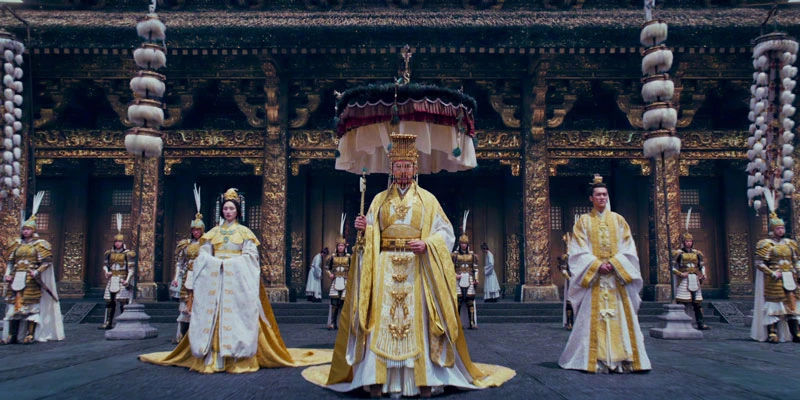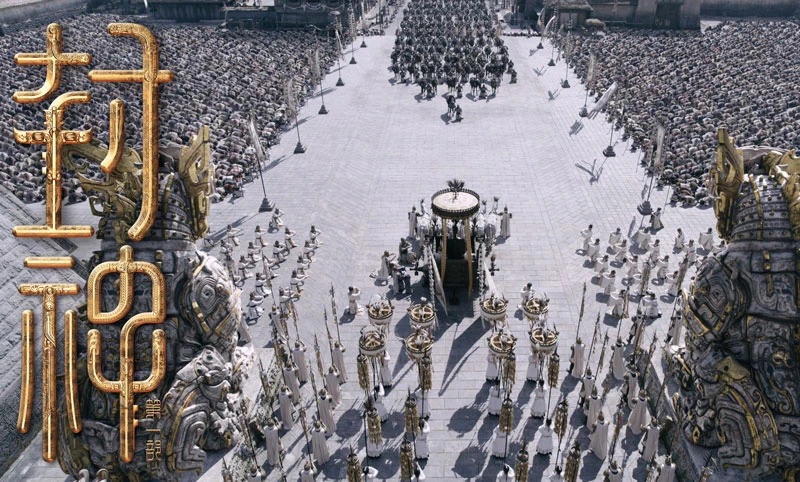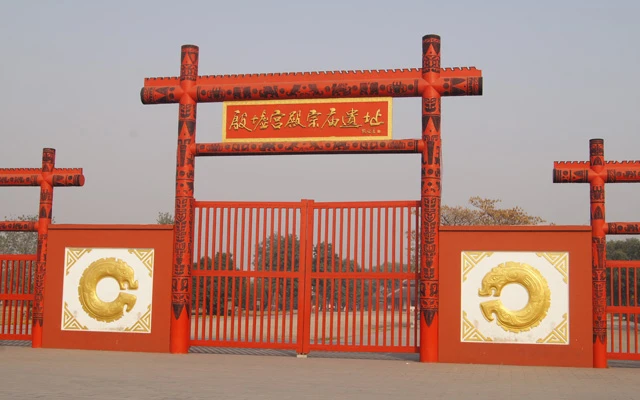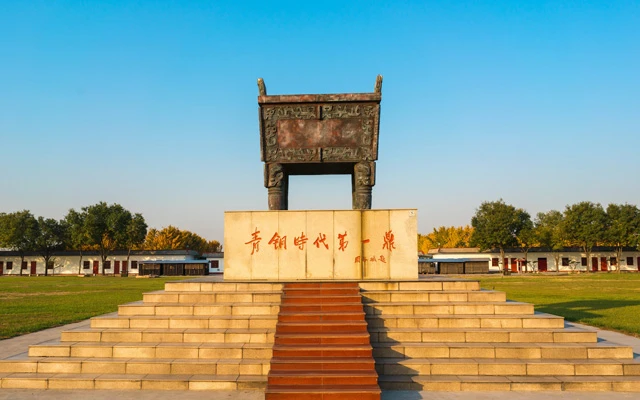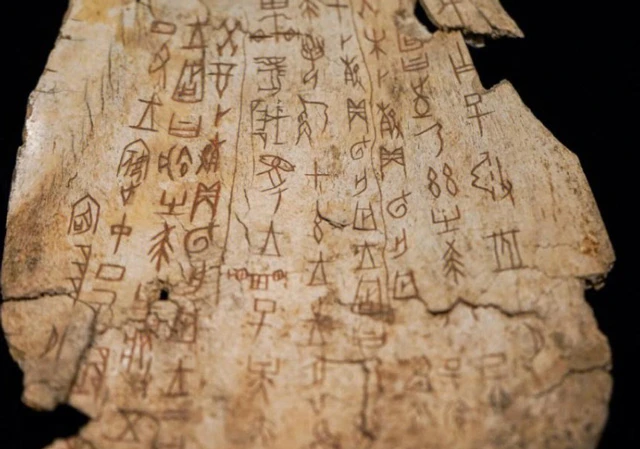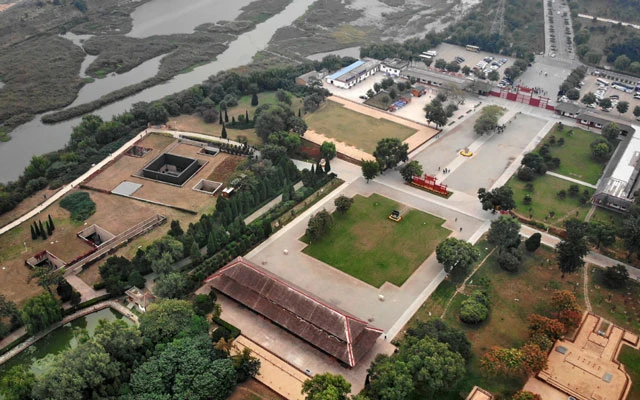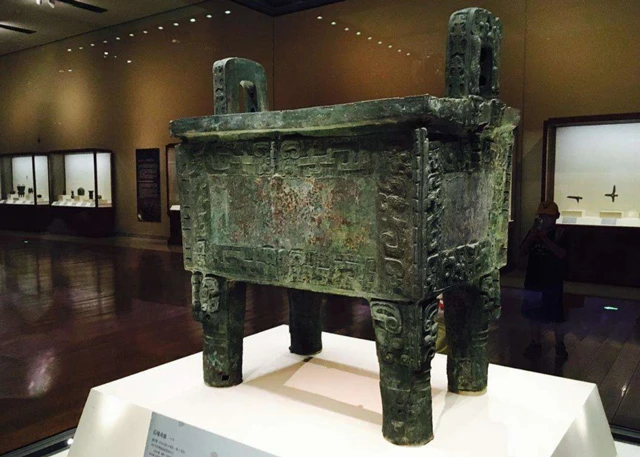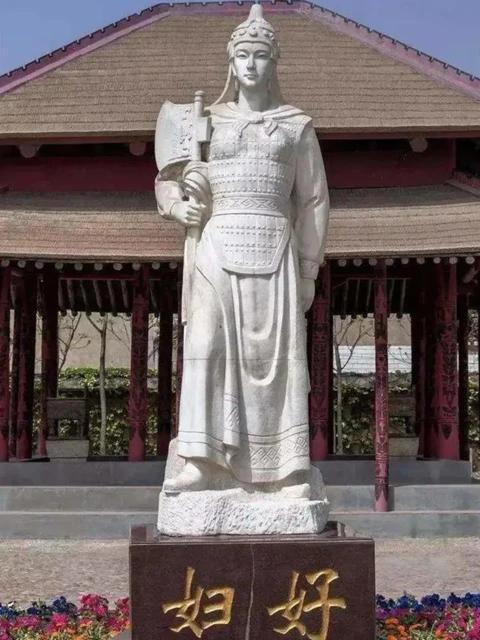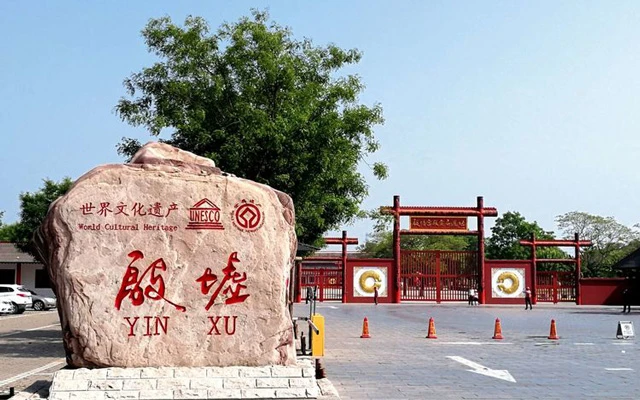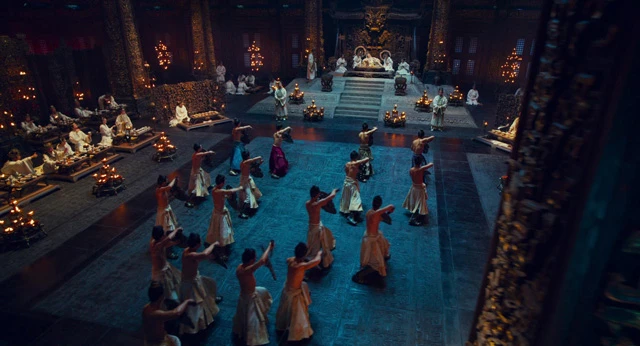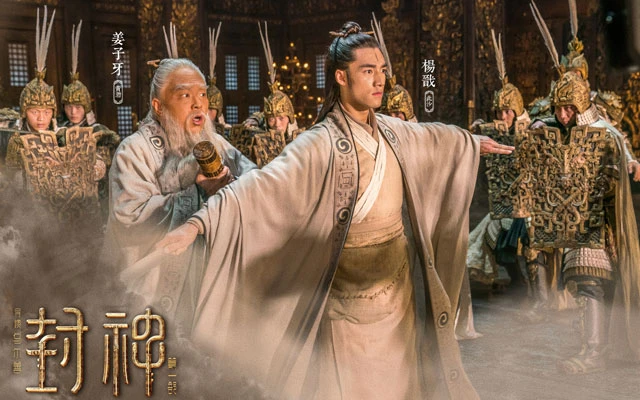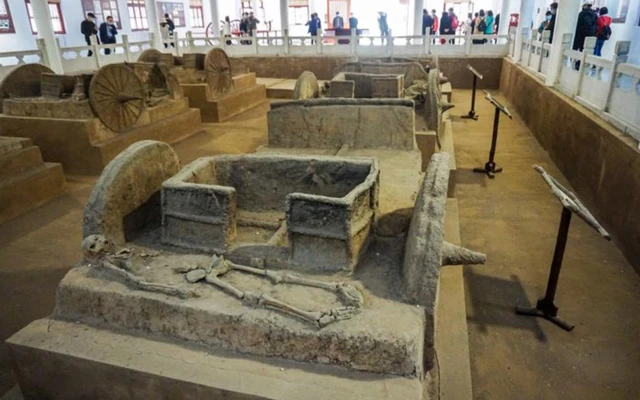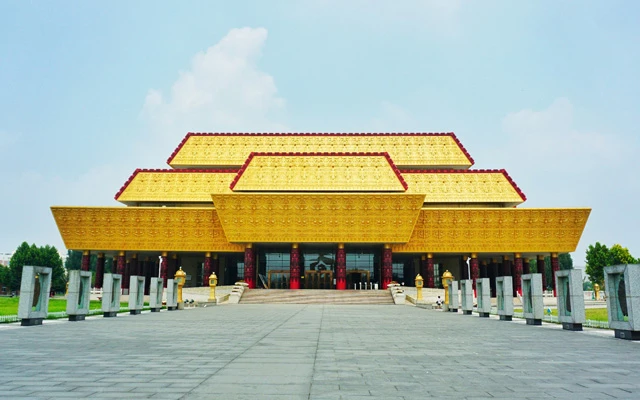The ancient mythological film "Creation of The Gods I: Kingdom of Storms," directed by Wuershan, is currently being enthusiastically screened. From the initial lack of confidence to now receiving numerous recommendations from audiences, the film's trend has been steadily rising against all odds.
According to data, the film has already grossed over 1 billion RMB in box office revenue and received a high score of 7.8 from 230,000 users on Douban. These outstanding figures in terms of commercial production prove that the film is making a comeback based on word-of-mouth and clearly demonstrate strong audience recognition and high expectations for sequels.
In addition to its innovative plot and characters, the film's depiction of the atmosphere during the Shang Dynasty is truly exquisite. Historical details such as turtle shell rituals and dazzling bronze artifacts not only pique people's curiosity about this ancient dynasty but also showcase remarkable craftsmanship. If you wish to explore Shang dynasty culture and related archaeological sites, then understanding Yinxu (殷墟) is essential.
Yinxu was once the capital city site during the late Shang Dynasty in China. It is located on both banks of Huai River in northwest suburbs of Anyang City, Henan Province. Centered around Xiaotun Village, it covers an area of approximately 30 square kilometers (km²).
In later stages of the Shang Dynasty, it was called Beimeng or simply Yin. In 14th century BCE, King Pan Geng moved capital here until King Zhou's downfall after eight generations spanning a total reign period of 273 years. Following their defeat by Zhou forces, Prince Wu Geng (King Zhou's son) was enfeoffed here; however due to Wu Geng's rebellion resulting in his death and subsequent migration by remaining Shang subjects over time caused it gradually become ruins hence named Yinxu.
As an important treasury showcasing Shang Dynasty culture accomplishments, Yinxu serves as both the birthplace and discovery site of oracle bone inscriptions. It is also where Fu Hao, an ancient female general, was discovered. Moreover, it is the first capital city site in Chinese history with documented evidence and archaeological confirmation.
In March 1961, Yinxu was officially declared one of China's first batch of key cultural heritage sites for protection. In March 2001, it received the highest number of votes to be included in the "Top 100 Archaeological Discoveries of 20th Century China." In July 2006, Yinxu was listed as a World Heritage Site in the UNESCO World Heritage List. In December 2010, it was approved by the China Tourism Administration as a "5A Tourist Attractions of China."
However, despite its rich historical and cultural value, Yinxu's popularity in terms of tourism seems disproportionate. According to "The Top 100 Brand Communication Power Rankings for 5A Scenic Spots" produced by media company Maidian, Yinxu did not make the list in both May and June, and its MBI index falls far behind other categories such as Longmen Grottoes, Longtan Grand Canyon, and Mount Laojunshan.
If this is true for Yinxu itself, then other locations related to Shang Dynasty would face even greater challenges gaining popularity. So what are the reasons behind this phenomenon? Can "Creation of The Gods" series film help boost interest in Shang Dynasty cultural tourism? Let us use Yinxu as an example to explore further.
01 The splendid and dazzling culture of the Yinxu
Let's first understand the Yinxu. According to records, its discovery and excavation can be traced back to the Qing Dynasty. Back in time to autumn 1899 (the 25th year of Emperor Guangxu in the Qing Dynasty). Wang Yirong, a high-ranking official in charge of education at the Imperial College, happened to purchase "dragon bones (turtle shells and animal bones)" as medicinal ingredients and discovered inscriptions resembling ancient characters on them.
Being knowledgeable and well-read, he was greatly shocked and speculated that these were long-lost ancient scripts. Immediately, he sent servants to buy all such medicinal ingredients from pharmacies for further study. The following year, when the Eight-Nation Alliance invaded Beijing, Wang Yirong committed suicide for his country. By this time, the craze for studying dragon bones had spread throughout Beijing and had affected numerous experts and scholars. One such scholar was Luo Zhenyu, a prominent epigraphist at the end of the Qing Dynasty.
He specifically dispatched his family members to Zhangde Prefecture (now Anyang City), where these dragon bones originated from, in search of their excavation site. After several twists and turns, they finally found it in Xiaotun Village on the outskirts of Anyang. From that moment on, oracle bone script unveiled its mysterious veil and opened up a glimpse into Chinese written history and Yinxu culture.
During the Republican era, official efforts were made to conduct professional scientific excavations in order to find more oracle bones. On October 13th, 1928, the archaeology team uncovered layers of yellow soil in Xiaotun Village which officially brought forth the glorious culture of Yinxu from within the depths of history, narrating stories about The Shang dynasty that existed over 3000 years ago.
In the more than 90 years that followed, archaeologist never ceased their footsteps in exploring the Yinxu through scientific research. Based on current discoveries, the Yinxu consist of the Yin tomb site, the palace and ancestral temple site of the Shang dynasty, and the Huaibei Shang city site. It can be roughly divided into palace areas, tomb areas, general burial areas, craft workshop areas, common residential areas, and slave residential areas. The core area of the heritage protection zone covers an area of 414 hectares with a buffer zone covering an area of 720 hectares.
The variety and abundance of artifacts unearthed from the Yin Ruins in the entire region are truly remarkable. Include 150,000 pieces of oracle bones, tens of thousands of pottery items, approximately 1,500 bronze ritual vessels, around 3,500 bronze weapons, about 2,600 jade objects, over 6,500 stone tools and more than 30 thousand bone utensils. Among them are many significant discoveries that have garnered global attention.
For instance, the "Houmuwu ding" unearthed in the Wangling area in 1939 is a monumental find. Standing at a height of 1.33 meters with a length of 1.10 meters and width of 0.78 meters weighing an impressive 875 kilograms; it is the largest bronze artifact ever excavated worldwide and is currently housed in the National Museum of China.
Casting such a massive object posed exceptional challenges. It is estimated that manufacturing such heavy equipment required clear division of labor and coordination among more than130 individuals simultaneously involved in processes ranging from copper smelting to casting molds and demolding.
Astonishingly, the proportions of copper,tin,and lead found in these bronze artifacts closely resemble those used in modern bronze casting techniques -a testament to their advanced metallurgical skills during that era. The initial purposeof this vessel was serving as a cooking pot for meat, yet later on, it gradually transformed into symbolizing power due to advancements in productivity.
Another notable discovery includes the Fu Hao Tomb excavated in1976. Fu Hao's surname was Hao (好), with Fu (妇) being an honorific title for female relatives, written last according to pre-Qin naming conventions. She was not only King Wu Ding's wife but also China's first documented female military commander as well as an outstanding female politician.After her death,she received posthumous temple name Xin (辛), and she was also referred to as "Houmu Xin" in bronze inscriptions.
Prior to the discovery of her tomb, Fu Hao's name had appeared more than 200 times in oracle bone divinations, revealing glimpses into aspects of her life and achievements. The appearance of Fu Hao's tomb further corroborated these findings while also presenting a broader perspective on Shang Dynasty culture.
Although the burial chamber itself is not particularly large, it has been remarkably well-preserved; alongside it, an abundance of burial goods were unearthed, 1928 items made from various materials including bronze, jade, gemstone objects, ivory artifacts, bone utensils, and shell objects, encompassing multiple facets such as clothing, food,dwelling,travelling,ceremonies,and warfare.
Of particular interest are two large bronze axes adorned with dragon and tiger motifs. According to research,it is believed that these bronze axes served both as ancient weapons and symbols of royal authority.It is as if through them one can catch a glimpse of Fu Hao's heroic presence on the battlefield during those times.
Beyond the Shang Dynasty remains, the Yinxu contain traces from other civilizations throughout different periods. In May 2017, during archaeological excavations within the protected area at Yinxu, a total of 18 Xiongnu tombs were discovered. These tombs were arranged neatly with consistent burial structures.
According to analysis based on unearthed artifacts, such burials date later than those found in the Yin Ruins period, and they differ in form and content compared to Central Plains' burial practices. Their age should be around late Eastern Han dynasty to Wei-Jin period which is approximately1800 years ago.
Even until last year, new excavation results continued emerging. On November 10th, 2022, the China Cultural Heritage Administration held a press conference titled "Archaeology China" to officially announce significant progress made in ongoing projects. One notable discovery was a large-scale garden-like relic of a palace and ancestral temple complex found in the Xiaotun area, covering an area of over 60,000 square meters.
02 Anyang Cultural Tourism in the process of endeavor
Upon closer observation, it is evident why such a rich cultural treasure has not become a popular tourist destination. The underlying reasons lie in the distant cultural time and the lengthy path of access, with the former being an inherent attribute of culture that is carved into history and cannot be altered, while the latter pertains to societal attributes that contemporary cultural tourism practitioners can work on shortening to enhance local economic value.
Let us first discuss the aspect of distant cultural time. The stories of the Shang Dynasty took place 3000 years ago, which is incredibly remote from our present time. Suppose someone were to travel back from the beginning of the Ming Dynasty to the end of the Shang Dynasty; they would traverse a timeline equivalent to going from 2023 to Spring and Autumn Period-Warring States Period.
During that era, civilization was not sufficiently matured, and there was insufficient geographic unity. As a result, there are limited historical records, artwork remains scarce compared to later periods, and few well-preserved large-scale production tools or architectural relics remain intact. This lack contributes to limited interest and attention towards the Shang Dynasty among contemporary people. Additionally, most significant unearthed artifacts have been relocated elsewhere, making it difficult to locate archaeological sites and further impeding visitor flow to Yinxu.
The reason for the long distance to reach is multifaceted. Firstly, it is due to the city's resources. Anyang, where the Yinxu are located, is not like cities such as Xi'an, Hangzhou, and Nanjing, which are both ancient capitals and provincial capitals. Even beyond the Yinxu, Anyang also has cultural heritage sites from different dynasties such as Yue Fei Temple, Cao Cao Mausoleum, Bian Que Temple, and Youli Castle Site. However, considering that transportation and accommodation facilities still need improvement and local cultural tourism industry has yet to form a complete chain of services; thus visiting the Yinxu or having a good tourism experience in Anyang still requires some effort.
Secondly, it relates to promotional strategies. In today's era of new media platforms especially short videos' popularity, Xi'an's ancient architecture complex became a popular tourist spot through short video promotion, while Zibo gained fame for its barbecue culture through platforms like short videos. These are successful cases related to effective publicity strategies but unfortunately Anyang did not seize this opportunity.
If we consider that urban resources and historical development are only loosely connected factors whereas short videos do not bear such burdensome limitations, it can be seen that regardless of whether it is a first-tier city or a fourth or fifth-tier town; regardless if it is an obscure niche scenic area or a popular literary landscape; as long as one carefully plans with channel attributes in mind, some results can be achieved. In any case, the treasure trove held by Anyang's cultural tourism industry is not without action. In order to promote the culture of the Yinxu and drive the local cultural tourism industry, a small town for archaeological tourism was built in Anyang in 2016.
As a supporting project of the Yinxu, the Yinxu Archaeological and Cultural Tourism Town is a large-scale comprehensive project that integrates tourism, culture, entertainment, and education. It covers a total area of approximately 250 acres, with Phase I occupying an area of approximately 110 acres. Some sections have already been opened to the public in November 2022.
Phase II will cover an area of approximately 140 acres and will focus on archaeological study tours, training programs related to archaeology, and designing an archaeological-themed hotel. The plan is to complete all construction by 2024.
During this period, various colorful activities were organized. These activities included live performances such as "Wu Ding & Fu Hao" and music festivals like "Blessings from Xuan Niao." Additionally, a large-scale stage play titled "Dreams of Yinxu," encompassing aspects such as Shang Dynasty clothing culture, historical wedding customs, rhite rituals, military warfare, and more was presented.
From this perspective, Anyang's cultural tourism is actively striving to build a tourism brand based on the "Yinxu" site, driving local revenue. There are many cultural and historical sites in Anyang City and its surrounding areas. If they can be linked together, it will undoubtedly become a potential powerhouse in the cultural tourism industry.
As an important medium for social imagery, film and television works have always been the most cost-effective means of promotion. The ancient legends showcasing the culture of Qin and Tang dynasties have made Xi'an renowned, while modern urban landscapes have gained attention through suspenseful dramas set in Chongqing.
Recently, the animated film "Chang An" serves as a typical example where educational routes designed around the movie are currently being developed. Whether Yinxu and Anyang can embark on a cultural tourism plan based on "Creation of The Gods" remains to be seen with anticipation.
